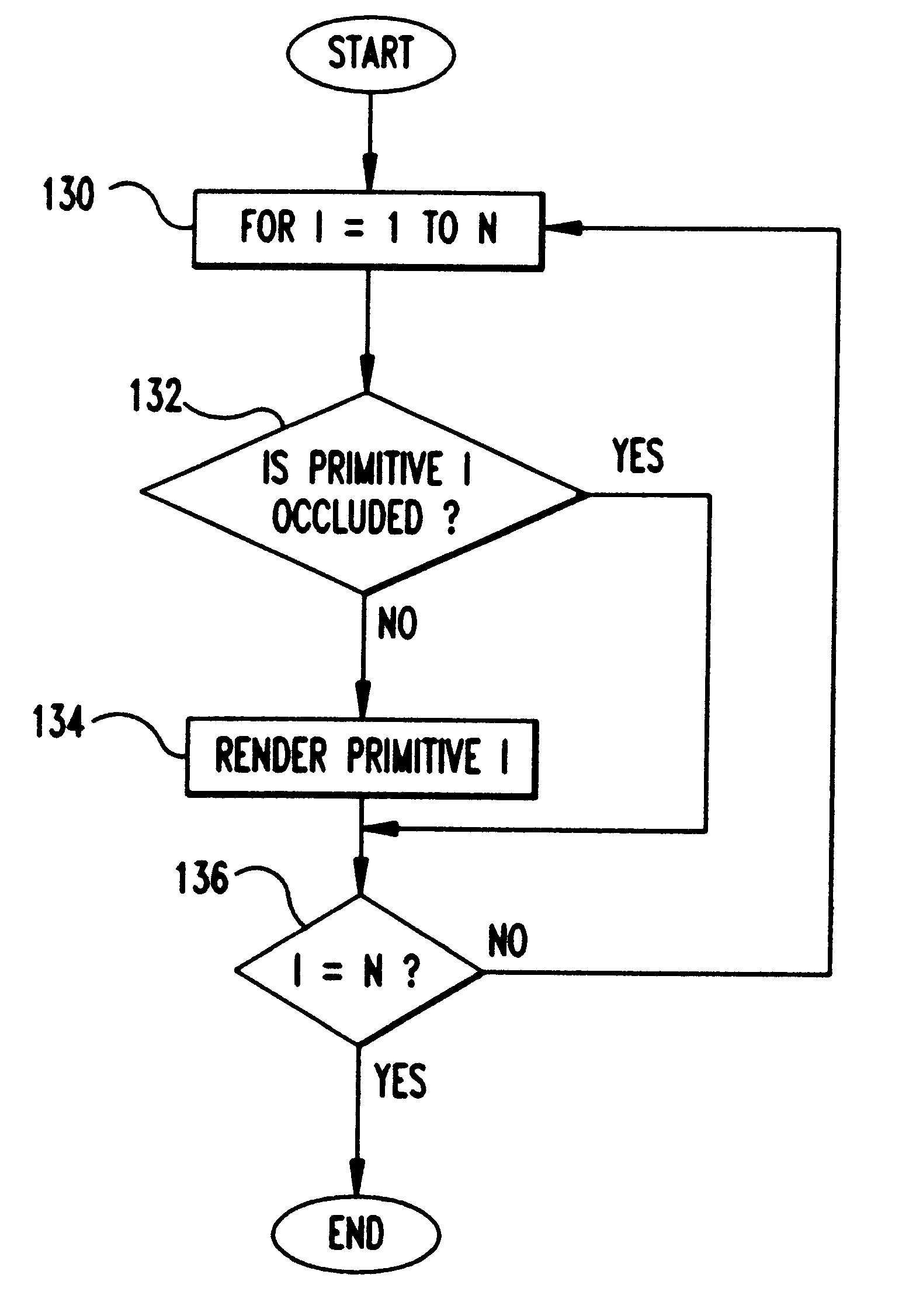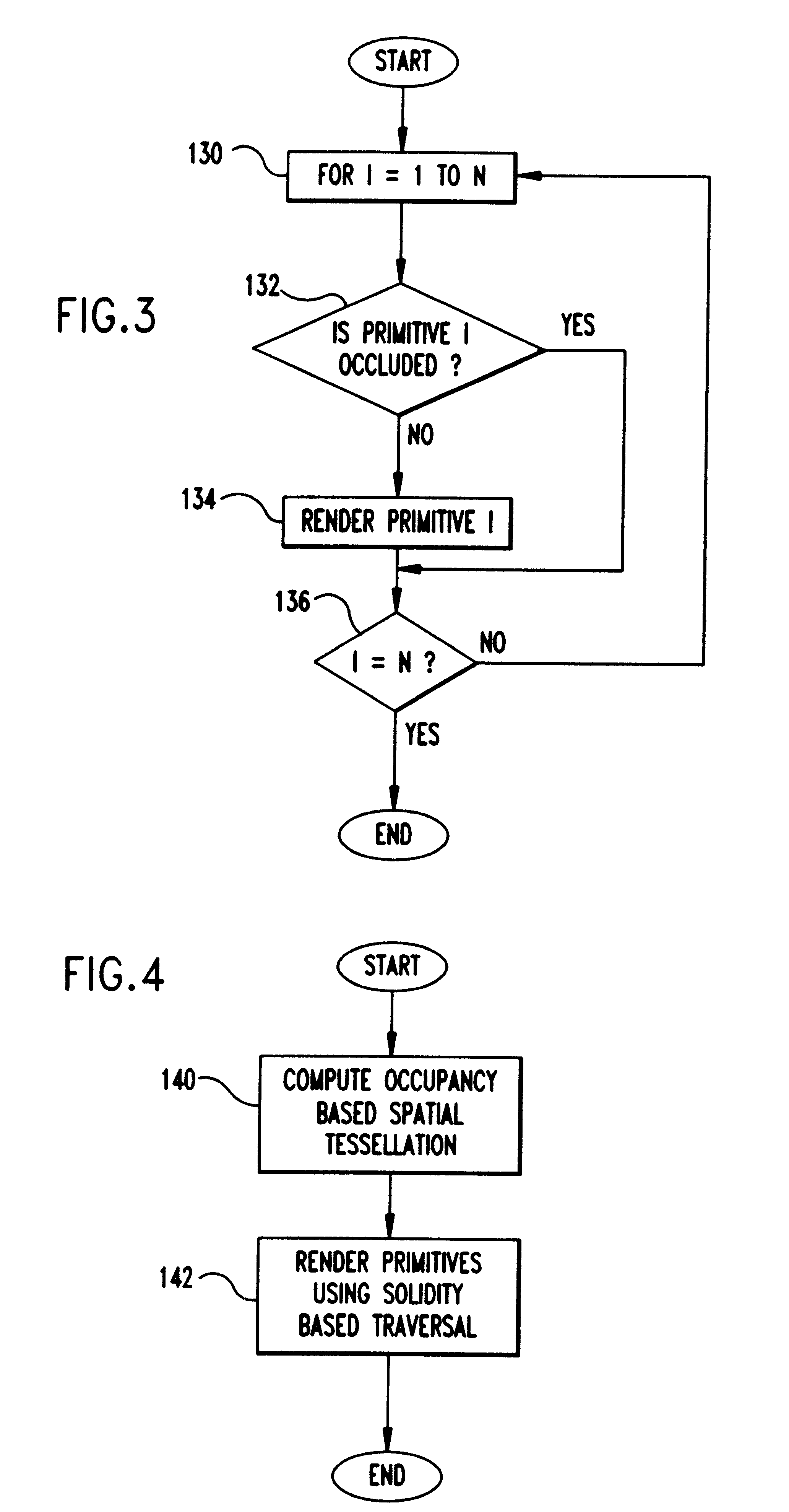System, program product and method of rendering a three dimensional image on a display
a three-dimensional image and display technology, applied in the field of image processing systems, can solve the problems of complex techniques that lead to substantial improvement in rendering time, inability to achieve tighter estimation of the visible set, and inability to achieve precise visibility computations
- Summary
- Abstract
- Description
- Claims
- Application Information
AI Technical Summary
Problems solved by technology
Method used
Image
Examples
Embodiment Construction
Referring now to the drawings, and more particularly, FIG. 1 is a block diagram of a preferred embodiment image processing system 100 that includes, as a minimum, a Central Processing Unit (CPU) 102, a memory subsystem 104 and an Input Output (I / O) subsystem 106 communicating through a data bus 108. Optionally, the system may include a graphics coprocessor 110 to offload graphics processing from the CPU 102, thereby reducing CPU computation-intensive tasks. Additionally, the preferred embodiment system 100 may include an optional graphics accelerator subsystem 112. Processed images are visualized on a display 114.
FIG. 2 is an example of an image rendered on display 114. The display area 120 is subdivided into display cells 122, normally referred to as pixels. A primitive 124, shown on the display 114, is a portion of the displayed three-dimensional scene. The primitive 124 is a projection of a three-dimensional primitive onto a two-dimensional "image space" of the display area 120. ...
PUM
 Login to View More
Login to View More Abstract
Description
Claims
Application Information
 Login to View More
Login to View More - R&D
- Intellectual Property
- Life Sciences
- Materials
- Tech Scout
- Unparalleled Data Quality
- Higher Quality Content
- 60% Fewer Hallucinations
Browse by: Latest US Patents, China's latest patents, Technical Efficacy Thesaurus, Application Domain, Technology Topic, Popular Technical Reports.
© 2025 PatSnap. All rights reserved.Legal|Privacy policy|Modern Slavery Act Transparency Statement|Sitemap|About US| Contact US: help@patsnap.com



